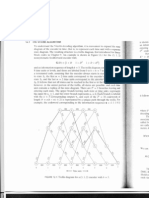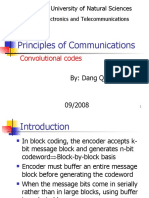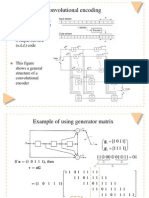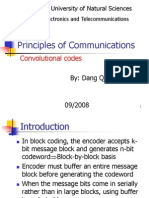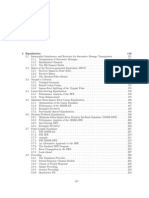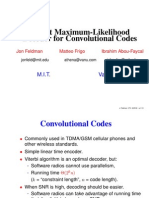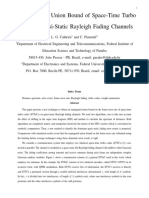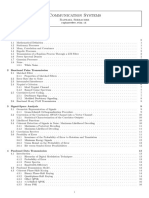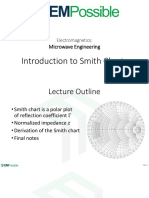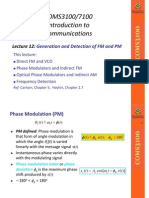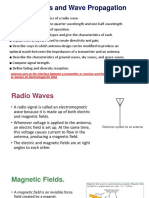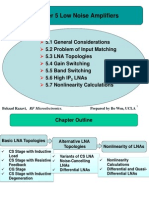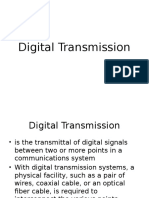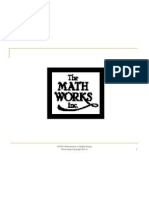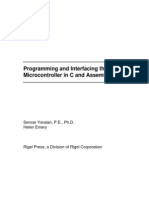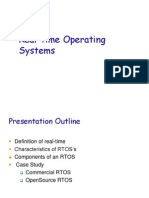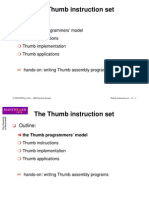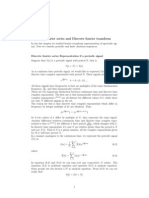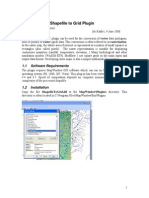0% found this document useful (0 votes)
86 views31 pagesOutline: - Error Correction Codes (Chapter 8) (Week 10 and 11)
The document outlines an error correction coding scheme using trellis codes and convolutional codes. It discusses modulation with memory using NRZI encoding and shows the trellis diagram and state transitions for NRZI. It then describes maximum likelihood sequence detection using the Viterbi algorithm to estimate the most likely transmitted sequence based on minimization of Euclidean distance on the trellis. An example calculation of the Viterbi algorithm decoding of an NRZI encoded sequence is provided to demonstrate how it works.
Uploaded by
HarshaCopyright
© Attribution Non-Commercial (BY-NC)
We take content rights seriously. If you suspect this is your content, claim it here.
Available Formats
Download as PPT, PDF, TXT or read online on Scribd
0% found this document useful (0 votes)
86 views31 pagesOutline: - Error Correction Codes (Chapter 8) (Week 10 and 11)
The document outlines an error correction coding scheme using trellis codes and convolutional codes. It discusses modulation with memory using NRZI encoding and shows the trellis diagram and state transitions for NRZI. It then describes maximum likelihood sequence detection using the Viterbi algorithm to estimate the most likely transmitted sequence based on minimization of Euclidean distance on the trellis. An example calculation of the Viterbi algorithm decoding of an NRZI encoded sequence is provided to demonstrate how it works.
Uploaded by
HarshaCopyright
© Attribution Non-Commercial (BY-NC)
We take content rights seriously. If you suspect this is your content, claim it here.
Available Formats
Download as PPT, PDF, TXT or read online on Scribd
/ 31






